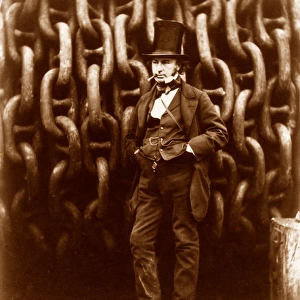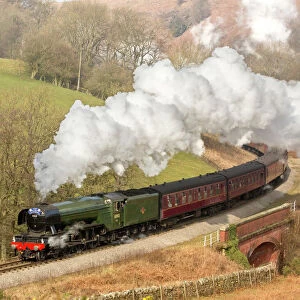Home > Transportation > Trains
The Reversing Station Viaduct
![]()

Wall Art and Photo Gifts from Mary Evans Picture Library
The Reversing Station Viaduct
The Reversing Station Viaduct; and Battery Hill cutting; at 11 1/4 miles Date: 1856
Mary Evans Picture Library makes available wonderful images created for people to enjoy over the centuries
Media ID 5085127
© Mary Evans Picture Library 2015 - https://copyrighthub.org/s0/hub1/creation/maryevans/MaryEvansPictureID/10510693
1856 Alice Bhore Clowser Ghat Peninsula Swainston Tredwell
FEATURES IN THESE COLLECTIONS
> Asia
> India
> Related Images
> Mary Evans Prints Online
> Inst. of Mechanical Engineers
> Transportation
> Trains
EDITORS COMMENTS
This photograph, titled "The Reversing Station Viaduct and Battery Hill Cutting" and dated 1856, offers a glimpse into the rich history of transportation in India during the British colonial era. The image showcases the impressive engineering feat of the Reversing Station Viaduct, located at 11 1/4 miles on the Peninsula Railway in India. The Reversing Station, a crucial component of the railway system, allowed trains to change direction without the need for lengthy and time-consuming reversing processes. The viaduct, with its elegant arches, is a testament to the ingenuity and determination of the engineers of the time, including Tredwell, Clowes, and Swainston. In the foreground, the Battery Hill Cutting is visible, a steep slope carved out to make way for the railway line. The cutting, named after the historic Battery Hill Fort, was a significant challenge during the construction of the railway. The steep terrain and rocky conditions required immense effort and resources to excavate and level the ground. The photograph, taken by an unknown photographer, captures the raw beauty and complexity of the railway construction process. The lush greenery and the intricate details of the engineering work are evident, as are the workers toiling away in the background. The image provides a fascinating insight into the transportation revolution that was taking place in India during the mid-19th century. The Peninsula Railway, which connected Mumbai (then Bombay) to Thane, was a vital transportation link between the coastal regions and the interior of the Indian Peninsula. The railway system played a crucial role in facilitating the movement of goods and people, contributing significantly to the economic development of the region. This photograph, with its intriguing details and historical significance, is a valuable addition to any collection of Indian history or transportation history.
MADE IN THE USA
Safe Shipping with 30 Day Money Back Guarantee
FREE PERSONALISATION*
We are proud to offer a range of customisation features including Personalised Captions, Color Filters and Picture Zoom Tools
SECURE PAYMENTS
We happily accept a wide range of payment options so you can pay for the things you need in the way that is most convenient for you
* Options may vary by product and licensing agreement. Zoomed Pictures can be adjusted in the Cart.




